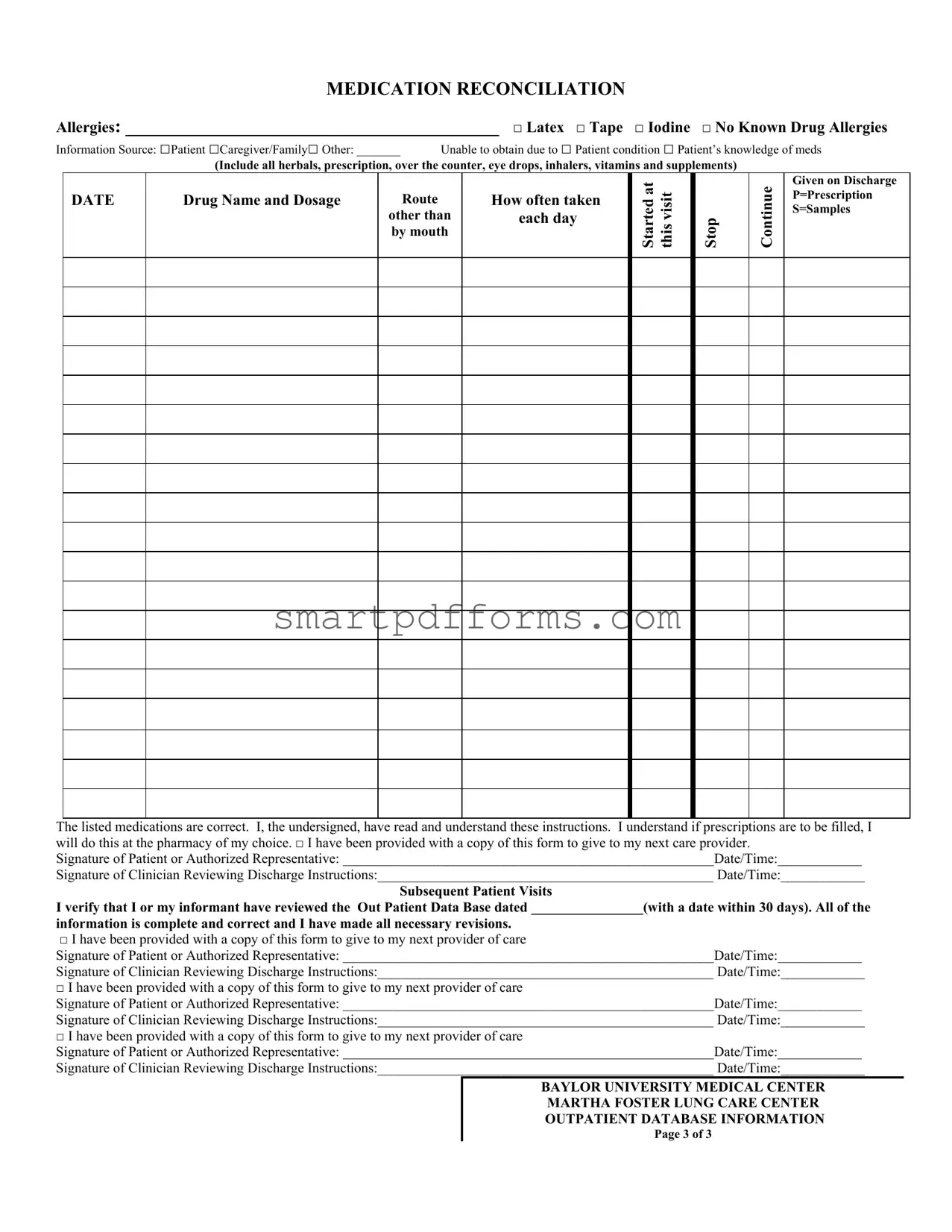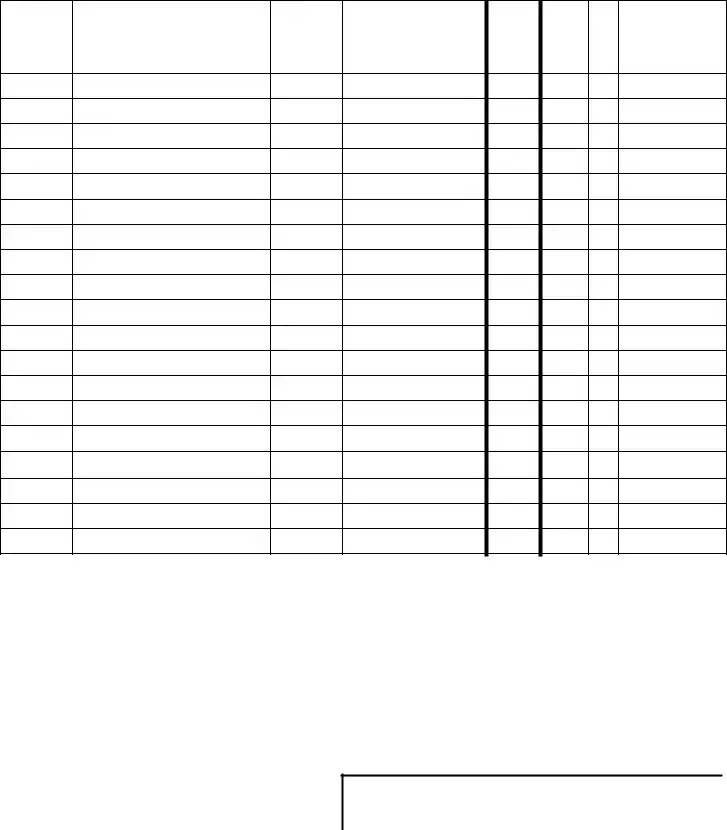MEDICATION RECONCILIATION
Allergies: ________________________________________ □ Latex □ Tape □ Iodine □ No Known Drug Allergies
Information Source: □Patient □Caregiver/Family□ Other: _______ |
Unable to obtain due to □ Patient condition □ Patient’s knowledge of meds |
(Include all herbals, prescription, over the counter, eye drops, inhalers, vitamins and supplements)
Route
other than by mouth
Given on Discharge P=Prescription S=Samples
The listed medications are correct. I, the undersigned, have read and understand these instructions. I understand if prescriptions are to be filled, I will do this at the pharmacy of my choice. □ I have been provided with a copy of this form to give to my next care provider.
Signature of Patient or Authorized Representative: _____________________________________________________Date/Time:____________
Signature of Clinician Reviewing Discharge Instructions:________________________________________________ Date/Time:____________
Subsequent Patient Visits
I verify that I or my informant have reviewed the Out Patient Data Base dated ________________(with a date within 30 days). All of the
information is complete and correct and I have made all necessary revisions.
□I have been provided with a copy of this form to give to my next provider of care
Signature of Patient or Authorized Representative: _____________________________________________________Date/Time:____________
Signature of Clinician Reviewing Discharge Instructions:________________________________________________ Date/Time:____________
□I have been provided with a copy of this form to give to my next provider of care
Signature of Patient or Authorized Representative: _____________________________________________________Date/Time:____________
Signature of Clinician Reviewing Discharge Instructions:________________________________________________ Date/Time:____________
□I have been provided with a copy of this form to give to my next provider of care
Signature of Patient or Authorized Representative: _____________________________________________________Date/Time:____________
Signature of Clinician Reviewing Discharge Instructions:________________________________________________ Date/Time:____________
BAYLOR UNIVERSITY MEDICAL CENTER
MARTHA FOSTER LUNG CARE CENTER
OUTPATIENT DATABASE INFORMATION
Page 3 of 3

